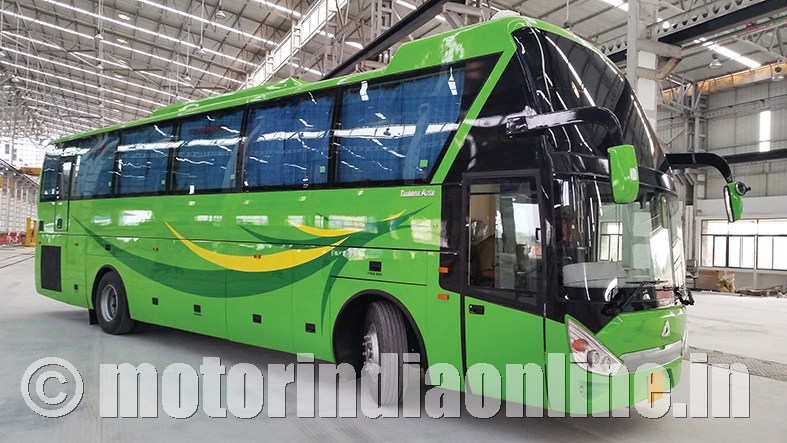“As long as we look at Safety features being implemented based on the regulation, there is always a way out that the operators and customers will try to look for. Safety features have to be non-negotiable. It is unfortunate that the safety features are on the bargaining table. It is important that we as manufacturers have to put our foot down and engage in educating the customers and passengers on the importance of the safety features that have to be a must on the buses. The Bus code should not be the point for implementation,” discloses Mr. M. Balaji Rao, Director, Corona Bus, and Principal Adviser, Deccan Auto Ltd. His views on the safety aspects follow.

Excerpts:
Mandatory and other safety requirements
* Safety measures are basically addressed in two categories: 1) To protect from the unfortunate incident happening, 2) Prevention of further damage after an unfortunate incident occurs.
* Unfortunate incidents happen either due to Human factors or through technical failures. To address the issue of Human factors we engage the drivers of buses in regular class room as well as on road guidance programs. These are mundane points for the drivers and hence not easy to be repeated in a class room session or on road programs. To engage the drivers attention on these aspects we run schemes / evaluations topped with gifts / prizes. This makes the drivers consciously adhere to the safety aspects. As most of our buses are fitted with cameras, we warn the drivers that any violation of the safety aspects will disqualify them from the program. We have a short safety film for the passengers like in the aircraft giving the details of the safety features in the bus. We encourage the drivers to talk about these on the public address system before the start of a long journey. This helps in reinforcing the safety aspects into the driver and make him conscious of the need to be more careful.
* In case of an unfortunate incident, the attention that needs to be paid by the occupants and the facilities available to support the situation have to be place. As explained above, we encourage the safety film to be played before the bus journey along with the driver talking about it to ensure that a majority of the passengers are aware of what to do when in a bad situation.
* Our buses have a unique feature that most of the other buses don’t have – an emergency door which is complete with steps and in full size so that people don’t have to jump off from the window height in case of emergency. Like in an aircraft there are gangway lights leading to the emergency doors. The roof hatch area is lit by LED lights to locate it in case the bus has fallen in water or has rolled over.
Safety apprehensions at higher road speeds
* It is a known fact that Speed limits on highways are violated by Bus operators. Increasing the speed limit officially is not going to make a major difference to the system. What is important is that, we need to urge the Government to make sure that the Highway facilities of first aid and ambulance service needs to be enhanced as studies have clearly shown that most of the deaths due to critical injury could have been avoided if support system comes in time.
* As far as the bus maintenance is concerned, we need to have regulations on security check of maintenance records of the buses plying on the highways. We can have online monitoring of maintenance schedules mandatory and link it up with the vehicle as well as driver insurance. This will put substantial pressure on the operator and driver to make sure that the buses are maintained as per the required norms.
Fire hazards safety features
* Most of the fires have been related to faulty design. When we say faulty design, it is related to all the three aspects: 1) Origin of fire, 2) Spread of fire, 3) Evacuation
* As long as the responsibility of the chassis (manufacturing) and body design (fabrication) lies with two different agencies, the issue of integrating the safety and fire aspect are going to remain. The understanding and design of the chassis and body has to be integral. The bus has to be seen as a single unit and manufactured as a single unit. It is high time that the OEMs take up manufacturing of the buses as a complete unit rather than focus only on the chassis. This would mean a beating to the bus body industry, but that is the need of the hour as we move towards the electric bus. This is even more critical in an electric bus as the Electric bus is more like a live bomb on the road.
